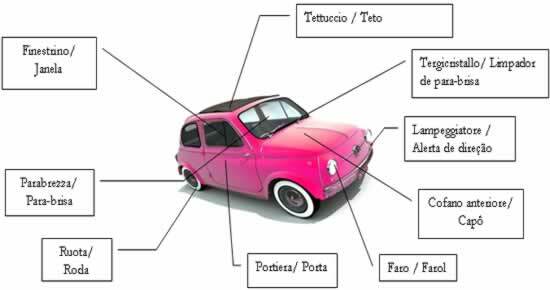Meaning: / Meaning: * “Rafforzamento della voce in it pronounces a sillaba, which assumes così particolare rilievo. Graphic segno che si uses to indicate the tonic vocale; Italian spelling è obbligatorio sulle parole troche di più di a sillaba (andò, carità), su alcuni monosillabi per distinguishrli from altri (la avverb da la articolo, s se pronoun congiunzione); It is invece facoltativo su parole che si scrivono all this way, e.g. nocciolo and nocciolo, fishing and fishing.” / Tonic accent is the reinforcement of the voice in the pronunciation of a syllable, which thus assumes a particular emphasis. Graphic sign is the sign used to indicate the stressed vowel; in Italian orthography, it is mandatory over oxytone words with more than one syllable (‘andò’, ‘carità’), on some monosyllables to distinguish them from others (‘là’ adverb of ‘la’ article, ‘sé’ pronoun of ‘if’ conjunction); and it is optional for words that are written in the same way, for example: ‘nòcciolo’ and ‘nocciòlo’, ‘pesca’ and ‘pèsca’.
*Information taken from Dizionario Garzanti.
Come differenziare l'accento acuto dall'accento grave? / How to differentiate between high and low stress?
Prima, devi capire le funzioni di ogni accento nelle parole. Vedi sotto le loro caratteristiche. / Before, you must understand the functions of each accent in words. See below for its characteristics.
 Acute Accent (´): / Acute Accent (´):
Acute Accent (´): / Acute Accent (´):
• Serves a stabilire un suono chiuso; / Serves to establish a closed sound;
• Serves the stabilire la vocale tonica di una parola, when si metti sulla ‘e’ o sulla ‘o’ chiuse. / Serves to establish the stressed vowel of a word, when placed over the vowel ‘e’ or over the vowel ‘o’ closed.
 Grave accent (`): / Grave accent (`):
Grave accent (`): / Grave accent (`):
• Serves to stabilire un suono grip; / Serves to establish an open sound;
• Serves the stabilire la vocale tonica di una parola, when si mette sulla ‘and’ the sulla ‘o’ press it. / Serves to establish the stressed vowel of a word, when placed over the vowel ‘e’ or over the open vowel o’.
When is obbligatorio segnare l’accento? / When is it mandatory to put accents?
Si fa obbligo segnare l'accento sui siganti gruppi di parole: / It is mandatory to emphasize the following groups of words:
 Nelle parole tronche ossitone eats: virtù, prosperità, università, caffè, amerò ecc; / In the oxytone words as: virtù, prosperità, università, caffè, amerò etc;
Nelle parole tronche ossitone eats: virtù, prosperità, università, caffè, amerò ecc; / In the oxytone words as: virtù, prosperità, università, caffè, amerò etc;
 In alcune parole che sono monosillabe eat: più, giù, ciò, può ecc. (except monosillabi: qui, wed); / In some words that are monosyllables like: più, giù, ciò, può etc. (except monosyllables: chi, wed);
In alcune parole che sono monosillabe eat: più, giù, ciò, può ecc. (except monosillabi: qui, wed); / In some words that are monosyllables like: più, giù, ciò, può etc. (except monosyllables: chi, wed);
Do not stop now... There's more after the advertising ;)
 In alcune parole monosillabe omophone (with stessa pronounces) and parole omograph (with stessa script, ma with different meaning). Esempi: / In some monosyllable words homophones (with the same pronunciation) and homographs (with the same spelling, but with a different meaning). Examples:
In alcune parole monosillabe omophone (with stessa pronounces) and parole omograph (with stessa script, ma with different meaning). Esempi: / In some monosyllable words homophones (with the same pronunciation) and homographs (with the same spelling, but with a different meaning). Examples:
• Parole omophone: / Homophone words:
- la (articolo) ≠ là (avverb);
- sì (segno d’affermazione) ≠ si (congiunzione);
- è (verb) ≠ e (congiunzione) ecc.
• Parole omograph: / Homographic words:
- anchor ≠ anchor;
- principle ≠ principle;
- Compto ≠ compito ecc.
Important!/ Important!
It is important to have a dictionary per capire the sense of ogni parola! / It's important to have a dictionary to understand the meaning of each word!
|
Register: / Note: All Italian language c’è anche l’accento circonflesso, però not so much use. Vedi cosa dicon i grammatici Maurizio Dardano and Pietro Trifone alla “Italian Grammatica con nozioni di linguistica” su loro use: “L’accento circonflesso (^) is oggi poco usato. If può trovare qualche back in the plural I gave nomi and aggettivi in –io, especially with distinctive value: main (from the beginning and not from the prince), varî (da varo and non da varo). Ma oggi si tends to ricorrere ad altre soluzioni, mo ssesso si scrive simply principle and vari, affidando la comprensione del significato al contesto.” / In the Italian language there is also the circumflex accent, but it is not used much. See what grammarians Maurizio Dardano and Pietro Trifone say in “Grammatica Italiana con nozioni di linguistica” about its use: The circumflex accent (^) is little used today. It is sometimes found in the plural of nouns and adjectives ending in -io, especially with a distinct value: main (from 'beginning' and not from 'prince'), varî (from 'vario' and not from 'varo'). But, today, there is an attempt to resort to other solutions, often simply writing 'principle' and 'vari', relying on the understanding of the meaning in the context. |
Atre informazioni! / Other information!
If you want to capture a po’ di più sull’argomento, it is possible to access altri testi al site: “La sillaba”, “syllabic division" and "Tonic sillaba”. / If you want to understand a little more about the subject, you can access other texts on the website: “La sillaba”, “La divisone sillabica” and “Sillaba tonica”.
Isabela Reis de Paula
Brazil School Collaborator
Graduated in Languages with Qualification in Portuguese and Italian
By the Federal University of Rio de Janeiro - UFRJ
Would you like to reference this text in a school or academic work? Look:
PAULA, Isabela Reis de. "Tonic Accent and Graphic Accent"; Brazil School. Available in: https://brasilescola.uol.com.br/italiano/accento-tonico-accento-grafico.htm. Accessed on June 29, 2021.



